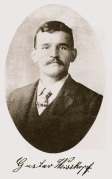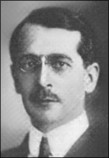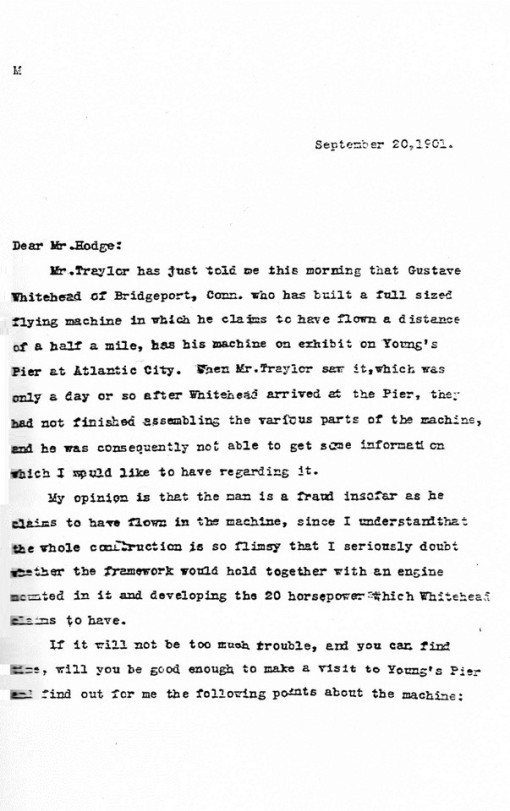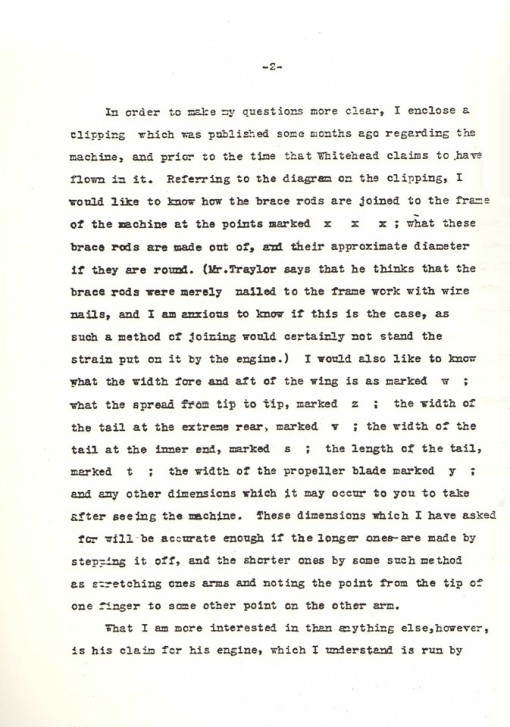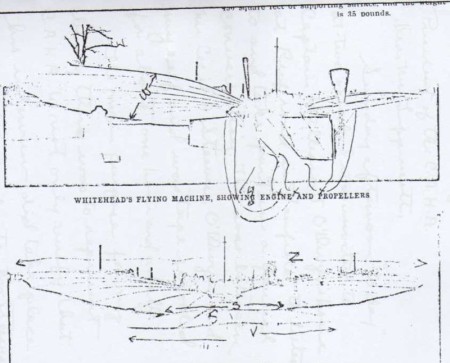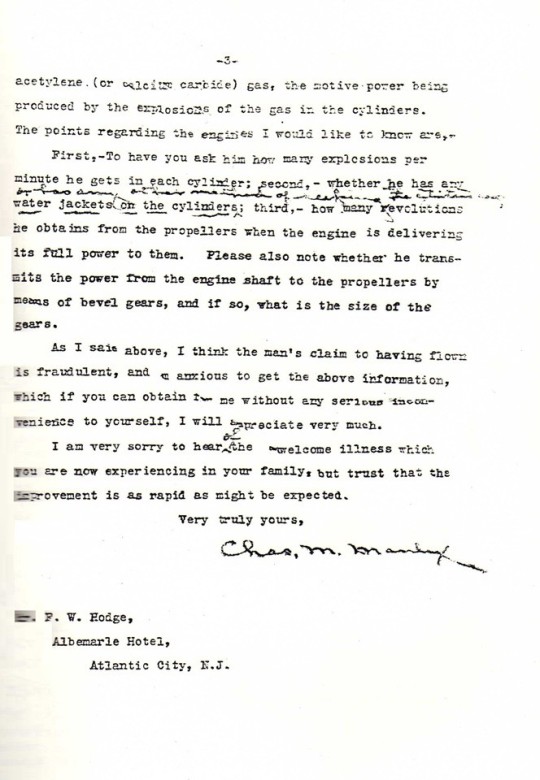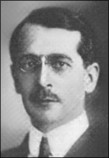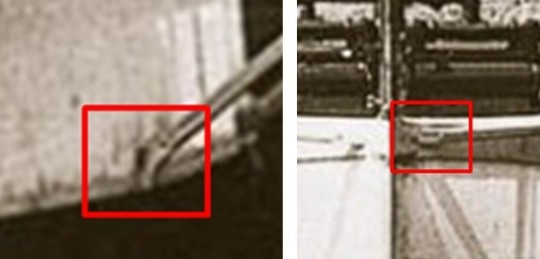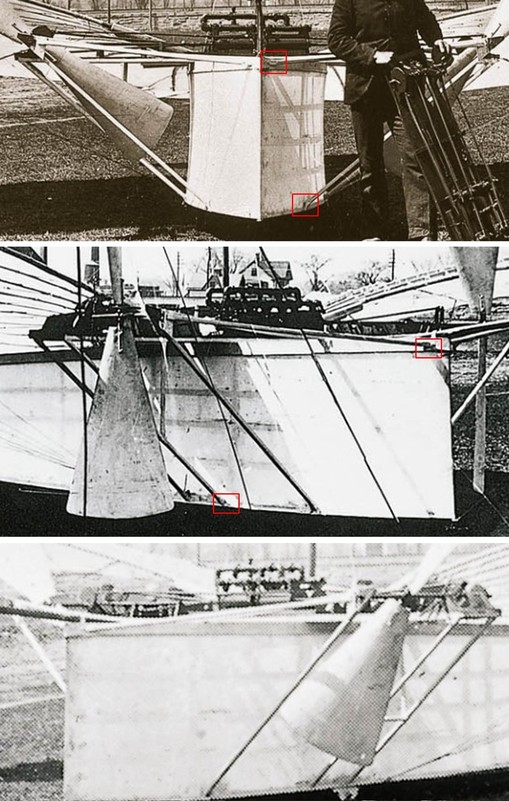Letter from Charles M. Manly (Assistent to the Director, Smithsonian Institute) to F.W.Hodge, Smithsonian Clerk, Sept. 20, 1901
"When Mr. Traylor saw it, which was only a day or so after Whitehead arrived at the pier, they had not finished assembling the various parts of the machine, and he was consequently not able to get some information [ ]. My opinion is that the man is a fraud insofar as he claims to have flown in the machine, since I understand that the whole construction is so flimsy that I seriously doubt whether the framework would hold together with an engine mounted on it and developing the 20 horsepower which Whitehead claims to have."
Evaluating Manly's assertions:
"I would like to know how the brace rods are joined to the frame of the machine at the points marked
x x x ,
what these brace rods are made out of and their approximate diameter if they are round. Mr. Traylor says that he thinks that the brace rods were merely nailed to the frame work with wire nails, and I
am anxious to know if this is the case, as such a method of joining would certainly not stand the strain put on it by the engine."
Without ever seeing Whitehead's machine, Manly surmized, it must be too flimsy to withstand the strains of an engine. He based his decision on the opinion of an administrative clerk who claims he saw nails securing parts when the machine arrived by rail in a packing crate. (Note: to this day, nails are used to secure items when transported in wooden crates on wooden pallets.)
The photos below, taken in spring, 1901 - several months before Machine No. 21 arrived in Atlantic City (Sept. 1, 1901) - clearly show how the brace rods were bolted:

